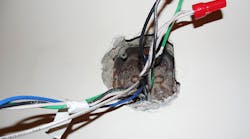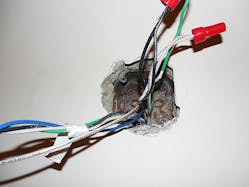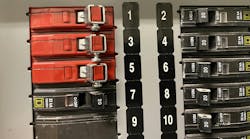How well do you know the Code? Think you can spot violations the original installer either ignored or couldn't identify? Here's your chance to moonlight as an electrical inspector and second-guess someone else's work from the safety of your living room or office. It's your turn to identify the violation.
Hint: Deep in thought
Find the Answer
This box is simply set too far back into the wall. Section 314.20 tells us that boxes installed in walls made of concrete, tile, plaster, or other non-combustible material must be installed so that they will not be set back from the surface more than ¼ inch. Although it might be a little hard for you to see, when I zoomed in on this photo, this box appears to be set back at least an inch or so from the wall surface. That is not permitted. Where boxes are installed in combustible walls, they may not be set back at all. In combustible walls, the box must be installed flush with the finished surface or project beyond it.
The installation in this photo does not appear to be completed yet. Some of the wires are not connected, and the cover or fixture has not yet been installed. I can only assume the installer will “do the right thing” and complete this installation so that it would be Code compliant. An extension box could be installed on top of the existing box in order to have the box not set too far back. According to Sec. 314.21, any wall gaps around the box or extension must be repaired so that there are no open spaces greater than 1/8 in.





